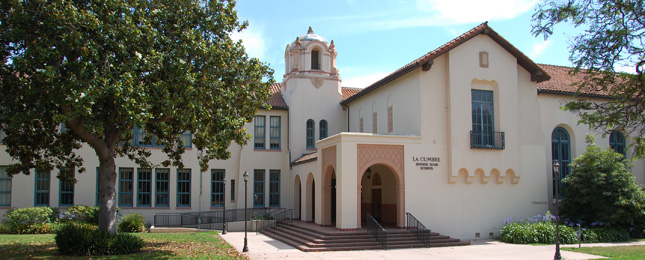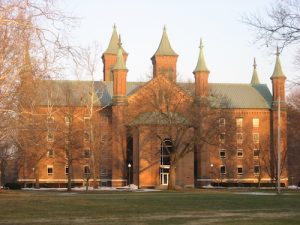
Graduation from College, image by Bluefield Photos.
Graduation wisdom for the easily amused
Graduation and the accompanying commencement speech frenzy is upon us, and unless the phone rings like, right this second, I won’t be giving the keynote at a prestigious university, trade school, internet college, high school or junior high ceremony this year. I’m shocked, I’m appalled, and I could have used that honorarium for some new shoes, but I won’t let pettiness get in the way of sharing my accumulated wisdom. Lucky you!
Most graduation speeches are soaring invocations meant to raise your spirits and send you joyfully into the next phase of your life. Phooey! How’s that going to help you learn the best way to say, “Do you want fries with that?” Here’s some practical information from someone who’s been there.
For those of you who are proudly graduating from preschool, let me give you this advice: if it’s moving, don’t eat it, clean up your own mess, stand up straight and stop fidgeting, and no tickling unless the other person agrees. It’s time to grow up. Kindergarten’s a blast.
For those of you leaving elementary school, remember: be yourself. And if you can’t be yourself, then be one of the really cool kids that everyone else wants to be. If you’re not a cool kid in junior high, then think about what the 13-year-old Bill Gates must have been like. And please remember, no means no when it comes to tickling.
If you’re in high school and going onto college, this may be the single most important piece of information you’ll ever receive — don’t schedule 8 a.m. classes. Schedule classes that you’ll actually go to. You can always do the reading later on in your life, but you will never have the opportunity to hear these professors again. As George Bush has proved, even C students can go on to be president of the United States …you know what? Do the reading….
If you’re thinking about celebrating your graduation with alcoholic beverages, drink the best ones you can afford to avoid hangovers, and never mix your liquors. Eat something before you go to bed and remember, Jack in the Box is open 24 hours. If you ignore this advice, the whole “hair of the dog” theory only works for alcoholics. Take two Tylenol and remember how sick you feel the next time.
If you’re thinking about celebrating your graduation by having some kind of a symbol tattooed on your person, take a good look at your father’s belly and your mother’s behind before you make that decision.
And while you’re looking carefully at your parents, scan the aisles and memorize your classmates’ faces. If they are your friends and you remain friends, they will look fabulous at your 20th reunion. If you don’t see them again for 20 years, they will age with an unnatural speed that is quite terrifying.
If you’re moving out of your parent’s house and you’re taking a mattress with you, remember to tie it down on the truck. Trust me when I say that it’s embarrassing to have to fetch your mattress from an inside lane of Highway 101.
Here’s something for all you graduates, even the preschoolers — ignore all but one of the 327 credit card offers you will receive in the near future, and use that one only for emergencies. And by the way, a sale at Blue Bee does not constitute an emergency.
Separate your whites from your colors, and if someone offers to teach you how to cook more than Easy Mac and Top Ramen, jump on the opportunity. Your bank account, your significant other, and eventually your children will thank you.
Most new grads fall off the cliff of student life and land with a Wile E. Coyote-like ‘SPLAT!’ on the pavement of the real world. Before you get creamed by dump trucks full of utility bills and falling anvils of student loans, if you can possibly swing it, take that trip to Europe or go work for that nonprofit in Mexico.
And if you’re going to Europe on your parent’s dime, you’re also going to want to take me.
However, if you’re stepping from your cap and gown into the beckoning arms of the working world, remember that boss is not a four-letter word, and if your boss proves worthy of more colorful expletives, keep in mind that who you work for and who you work with is every bit as important as what you do.
On the other hand, there’s always graduate school.
Say yes to any opportunity that sounds interesting, challenging or gets you in the room with people you can learn from — even if you already have too much work to do. You will never have more energy than you have at this stage in your life, so you may as well take advantage of it.
And, seriously, you really have to stop tickling people.
To all my graduating friends, none of whom saw fit to give me even the teensiest honorarium or an honorary degree in applied mathematics, I leave you with this final piece of advice from Oscar Wilde: “The best thing to do with advice is to give it to someone else.”


 Santa Barbara’s favorite emcee has helped raised millions of dollars for local causes. But he can’t be outbid when it comes to community service.
Santa Barbara’s favorite emcee has helped raised millions of dollars for local causes. But he can’t be outbid when it comes to community service.
